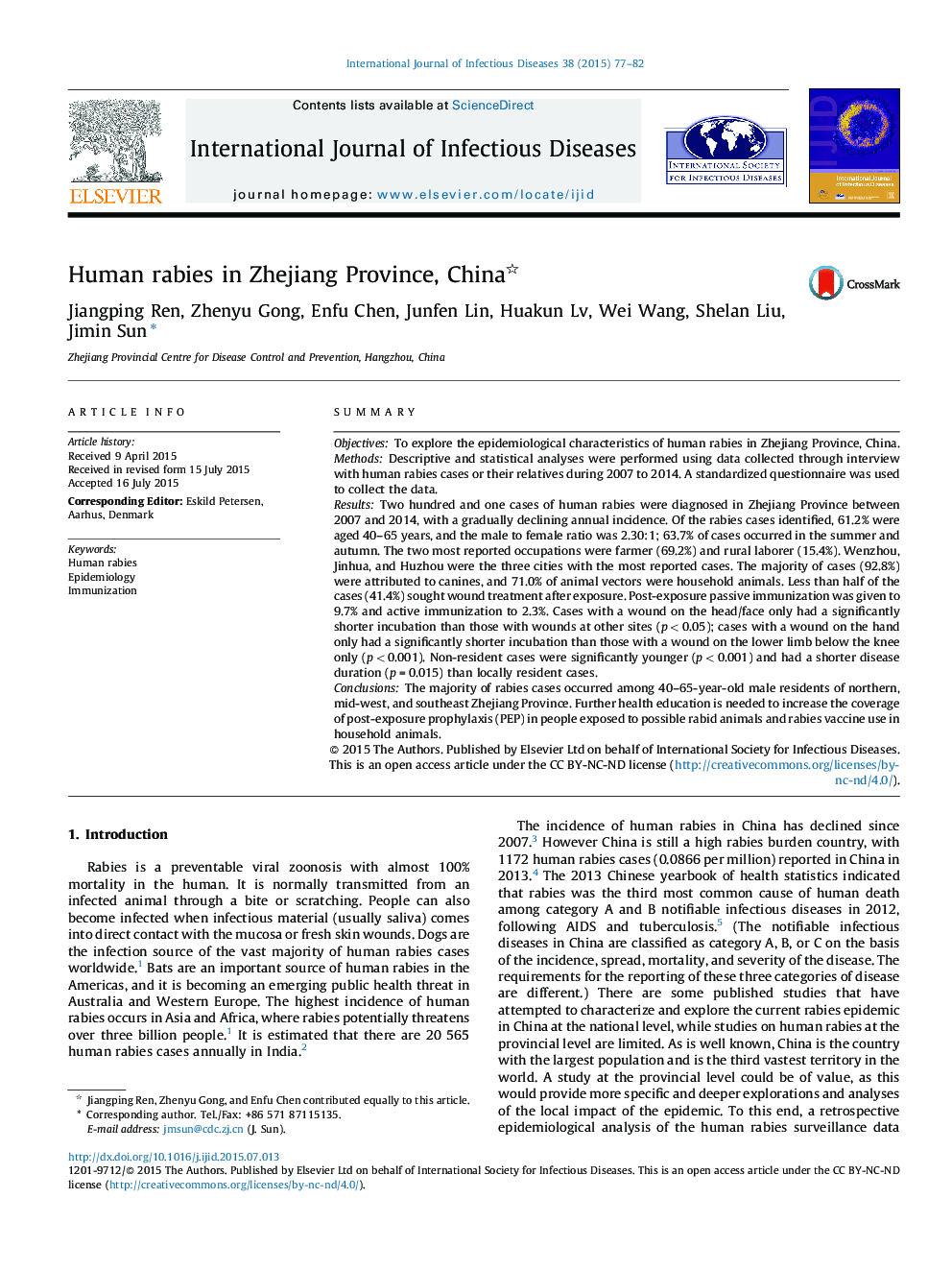| کد مقاله | کد نشریه | سال انتشار | مقاله انگلیسی | نسخه تمام متن |
|---|---|---|---|---|
| 3361990 | 1592057 | 2015 | 6 صفحه PDF | دانلود رایگان |
• A retrospective epidemiological analysis of the human rabies surveillance data for the period 2007–2014 was carried out.
• The incidence of human rabies in Zhejiang Province decreased gradually from 2007 to 2014.
• 40–65-year-old male farmers and rural laborers in the northern, mid-west, and southeast regions of Zhejiang Province represent the high-risk population for human rabies in Zhejiang.
• Compared with the whole of China, human rabies cases were older and the percentage of cases under 15 years of age was lower in Zhejiang Province.
• About 18.4% person will not receive vaccination after exposure, and the immunization rate for rabies immunoglobulin is extremely low in Zhejiang Province.
SummaryObjectivesTo explore the epidemiological characteristics of human rabies in Zhejiang Province, China.MethodsDescriptive and statistical analyses were performed using data collected through interview with human rabies cases or their relatives during 2007 to 2014. A standardized questionnaire was used to collect the data.ResultsTwo hundred and one cases of human rabies were diagnosed in Zhejiang Province between 2007 and 2014, with a gradually declining annual incidence. Of the rabies cases identified, 61.2% were aged 40–65 years, and the male to female ratio was 2.30:1; 63.7% of cases occurred in the summer and autumn. The two most reported occupations were farmer (69.2%) and rural laborer (15.4%). Wenzhou, Jinhua, and Huzhou were the three cities with the most reported cases. The majority of cases (92.8%) were attributed to canines, and 71.0% of animal vectors were household animals. Less than half of the cases (41.4%) sought wound treatment after exposure. Post-exposure passive immunization was given to 9.7% and active immunization to 2.3%. Cases with a wound on the head/face only had a significantly shorter incubation than those with wounds at other sites (p < 0.05); cases with a wound on the hand only had a significantly shorter incubation than those with a wound on the lower limb below the knee only (p < 0.001). Non-resident cases were significantly younger (p < 0.001) and had a shorter disease duration (p = 0.015) than locally resident cases.ConclusionsThe majority of rabies cases occurred among 40–65-year-old male residents of northern, mid-west, and southeast Zhejiang Province. Further health education is needed to increase the coverage of post-exposure prophylaxis (PEP) in people exposed to possible rabid animals and rabies vaccine use in household animals.
Journal: International Journal of Infectious Diseases - Volume 38, September 2015, Pages 77–82
